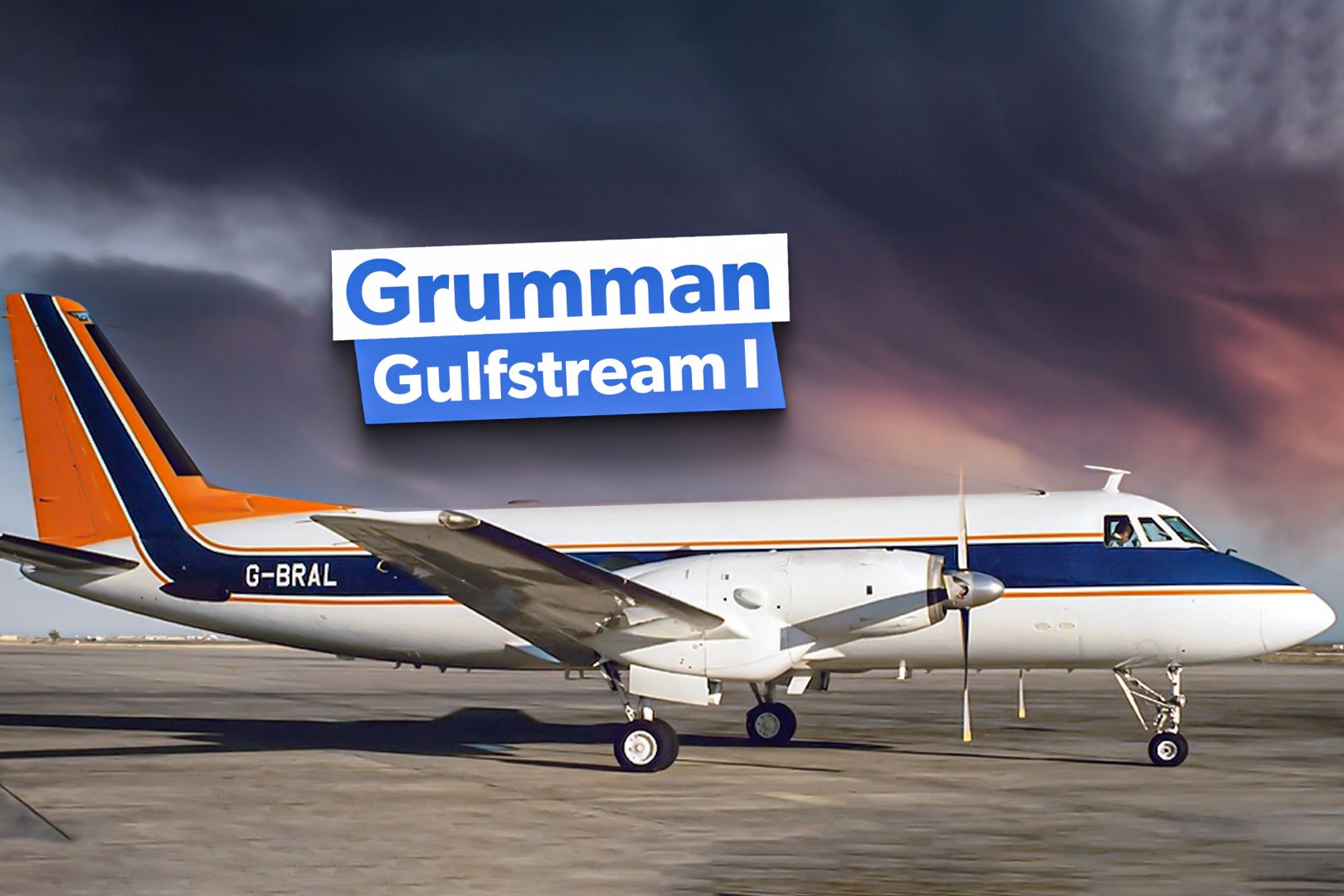In the mid-1950s, Grumman Aerospace explored the development of a business turboprop. At that time, the company was manufacturing and selling propeller-driven aircraft for military use, as well as small amphibious planes that could take off from and land on water. Now, better known as business jet behemoth Gulfstream, the company, owned by General Dynamics, posts sales of close to $9 billion a year and delivers more than 100 aircraft.
Grumman initially considered modifying the TF-1 Trader but decided on a new design: the G-159 Gulfstream, with a low-wing and stand-up cabin. Finalized in June 1957, the first Gulfstream flew on 14 August 1958 and received FAA certification by 2 May 1959, beginning a story of success for the Grumman-founded company. The Grumman Aircraft Engineering Company was established on December 6, 1929, by Leroy Grumman, Edmund W.

Poor, William T. Schwendler, and Jake Swirbul. It grew to become a major American producer of military and civilian aircraft.
In 1994, Grumman merged with Northrop Corporation to become Northrop Grumman. Grumman had built airplanes for the private aviation market, a notable example being the iconic Grumman Widgeon twin-engine amphibian. However, the first Grumman land plane designed specifically for business travel was the venerable (G-I59), a large-cabin twin-turboprop business aircraft.
Powered by two 2,100 SHP Rolls-Royce Dart engines, the first G1 prototype test article rolled out of the Grumman factory on Long Island, NY, in 1957, and the certification test aircraft flew on its maiden flight on August 14, 1958. The G-I could seat 12 passengers in large-cabin luxury; the G1 had a remarkable range of 2,200 NM. Produced from 1958 to 1966, Gulfstream delivered a total of 200 Gulfstream G1 aircraft.
Following the G-I's success, Grumman began developing a jet-powered version based on the G1 airframe. The renowned Rolls-Royce Spey turbofan engine powered the (GII). Each engine produced 11,400 lbs.
thrust, resulting in impressive field performance and cruise speeds. Grumman realized that the rapidly growing company had achieved success as a general aviation airframe manufacturing manufacturer. The company elected to separate its civil and military production lines in the interest of corporate efficiency and relocated the Gulfstream civil aircraft division to Savannah, Georgia, in 1966.
The new Gulfstream Aircraft became a wholly owned Grumman subsidiary. Grumman's motivation to spin off Gulfstream and set up civil aircraft Savannah was compelled by the availability of skilled, relatively low-cost labor, favorable weather conditions for year-round operations, and suitable transportation facilities. The new facility in Savannah was dedicated on September 29, 1967, and initially employed only 100 people, a number that grew significantly in the years to follow.
The late 1970s through the 1980s were a time of significant corporate changes and growth in the aviation industry. Demand for private turbine aircraft increased at a time when there were only a few competitors, including Learjet, Inc. (Learjet 23 and -24) and North American Aviation (Saberliner).
The period spelled tumultuous times for companies as technology development began to explode, and broad economic pressures complicated business decisions and strategies. In 1978, Grumman sold the Gulfstream aircraft product line and its Savannah, GA plant to American Jet Industries, a company led by entrepreneur Allen Paulson. The company was then renamed Gulfstream Aerospace Corporation in 1982.
During this era, Gulfstream produced the popular Twin Commander line of Garrett AiResearch TPE331-powered pressurized turboprops, including the 690A, 690B, 840, 900, and 1000 models. The Gulfstream facilities in Savannah, GA also saw production of the American Yankee family of light single-engine aircraft, after Gulfstream Aerospace purchased the product line and type certificates from American Aviation in 1977. The type was designed by Jim Bede in the 1960s.
Gulfstream underwent several ownership changes, acquired by Chrysler Corporation in 1985 and then bought back by Paulson in 1989 after a brief interlude of ownership by New York investment firm Forstmann, Little & Co. In 1999, Gulfstream was acquired by General Dynamics, under whose ownership it continues to operate. Over the years, Gulfstream has developed a wide array of business jets, including the G100, G150, G200, G350, G450, G500, G550, G650, G700, and G800.
The company has been recognized for its innovations, winning . The Gulfstream V (GV), introduced in 1997, was particularly notable for setting around 40 speed and distance records. Technicians spent over 3,000 staff-hours to complete the paint job.
Gulfstream took an active role in the Savannah community, contributing to local education and the arts. The company has partnered with various educational institutions and supported numerous community initiatives. The company has continued expanding its facilities in Savannah, including creating new service centers and research and development facilities.
Gulfstream Aerospace Corporation's complex history began with the vision of Grumman Aircraft Engineering Corporation to diversify into business aviation at a time when there were few private aircraft airframe builders. From the development of the Gulfstream I in the late 1950s to its current status as a leading manufacturer of business jets under General Dynamics, Gulfstream has evolved and expanded, remaining at the leading edge of technology and innovation in the private jet space. Today, the Gulfstream Aerospace Corporation products have achieved the status of apex designs in the private jet world.
The Gulfstream G700 and G800 are two of the longest-range, fastest, most luxurious, and, yes, most expensive private jet aircraft worldwide. The Grumman Gulfstream I served many airlines across the world a few decades ago..


















